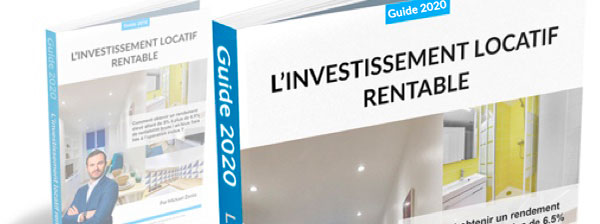Thermal strainer: risky investment or opportunity?
As part of the fight against global warming, the State wants to improve the energy consumption of the French housing stock. The government has acted by decree with the aim of targeting residential housing and by addressing housing lessors .
Thermal strainer: definition of housing called energy strainers
A thermal sieve, also called an energy sieve , is a home that does not meet insulation and energy efficiency standards, which means that it consumes too much energy.
In fact, the diagnostician carries out an audit. He enters parameters into his software, and a score is given to the accommodation. This score is translated into letters, from A to G.
A is the best possible grade for DPEs, and G the worst.
Housing classified as F or G is what is called a thermal sieve. It is supposed to be difficult to heat, which results in higher consumption that can be difficult for French households to afford, especially the most modest ones. The term thermal sieve therefore covers several categories of housing, which are generally not very energy efficient. The global awareness in terms of ecology and the scarcity of energy resources, as well as the recent increase in energy costs linked to the war in Ukraine, are pushing to accelerate the standardization of the French housing stock.
Context and evolution of the energy performance diagnosis
Following 3 decrees published in the official journal on April 13, 2021, the energy performance diagnosis (DPE) is no longer informative but enforceable.
This regulatory change leads to technical developments, particularly in the method of calculating the energy performance of housing (and buildings). While it was based on previous energy consumption in the old calculation (i.e. on old electricity and gas bills), it is now based on the characteristics of the building and the equipment of the housing.
Thermal strainers and rental ban
La grande nouveauté de 2021, et celle qui effraie les propriétaires bailleurs ainsi que le gouvernement, c’est l’interdiction de louer.
G-rated housing: prohibited from rental in 2025
Housing classified F: 2028
Housing classified E: 2034
Why does it scare landlords?
Because G-rated housing will no longer be considered decent and landlords will have an obligation to remove them from rentals from 2025. They will therefore be forced to leave them empty... while France already has a shortage of 2.2 million homes according to studies published by real estate professionals.
The estimate made by real estate professionals indicates that one million homes (yes, 1,000,000!) would be classified G and therefore prohibited from rental in 2025. If we include homes classified F, the sum is 4.8 million homes.
France is already suffering from a housing shortage in high-demand areas, and removing supply seems politically impossible. Watch this space.
Technical criteria taken into account in the new DPE
The old DPE system allowed a calculation on the actual and previous consumption of housing. This system was not perfect, since housing that had been empty for years did not allow a rating to be obtained. For these housing units, the mention blank DPE appears. This is no longer possible with the new system which is based on the characteristics of the building and the equipment of the housing.
The DPEs since the 2021 reform take into account the following elements (non-exhaustive list):
- roof and attic insulation
- insulation of so-called heat-loss walls (walls that face the outside or an unheated surface)
- type of windows in single, double or triple glazing
- housing ventilation (VMC hygro B or VMC hygro A)
- type of heating and energy used (collective, individual, type of boiler, type of gas)
Is buying a thermal colander a good idea?
Thermal sieves are not doomed to remain so. This is the state of a home at a given time, and of course the rental investor will be able to carry out work so that his property is no longer considered as such.
Insulation and improvement work on the energy side can be the subject of state aid, provided that you apply in advance, choose a certified company and are not afraid of French administrative procedures - as usual, everything is simple, we promise.
The improved housing will allow future tenants to save on their electricity and gas bills. This is important given the very high levels of energy inflation in 2021 (+15% in November 2021).
State aid My Prime Renov
Aware of the ecological challenge and the necessary work, the French State has set up financial aid for landlords who wish to improve the energy performance of their homes. The scheme has been named MaPrimeRénov'.
This assistance depends on your income and the ecological gain of the work carried out.
The application is made online, and the state will assign you a color based on your income.
A simulator has also been set up to help you see things more clearly.
Invest in a thermal colander?
Thinking like an investor means seeing difficulties as opportunities. Thermal sieves will lead to sales, and they can scare off first-time buyers or beginning investors.
If you want to buy at a discount, and therefore get a “good deal on the purchase”, the fact that the property is classified F or G can be an opportunity.
Before purchasing, you will need to analyse the modifications needed to improve the energy efficiency of the target home, and calculate the necessary renovation work. Include these investments in the cost price of your property and therefore in the calculation of the yield - taking into account that aid is available.
If the project is profitable by integrating these costs, then this thermal strainer is a good deal. Otherwise, move on.
Do you have a real estate investment project? Take stock during a free appointment with our team: Book my free appointment
Are you selling a thermal strainer? Contact us
These articles may also be of interest to you
-

La Transmission Universelle de Patrimoine (TUP) est une méthode juridique permettant de transférer intégralement les actifs, passifs, droits et obligations d'une entité à une autre en assurant la continuité patrimoniale et en limitant les risques d'erreur.
-

L'immobilier résiste à la crise économique grâce à une demande soutenue, des prix rééquilibrés et des taux d'intérêt stabilisés. En période de crise, les primo-accédants, investisseurs et vendeurs doivent ajuster leurs stratégies pour saisir les opportunités et optimiser leurs projets immobiliers.
-

La gestion comptable d'une SCI familiale peut sembler complexe, mais elle repose sur des principes simples. Ce guide vous aide à comprendre les obligations légales et à simplifier la comptabilité en utilisant des outils adaptés. Vous découvrirez des conseils pratiques pour éviter les erreurs fréquentes et assurer la conformité fiscale de votre SCI.



